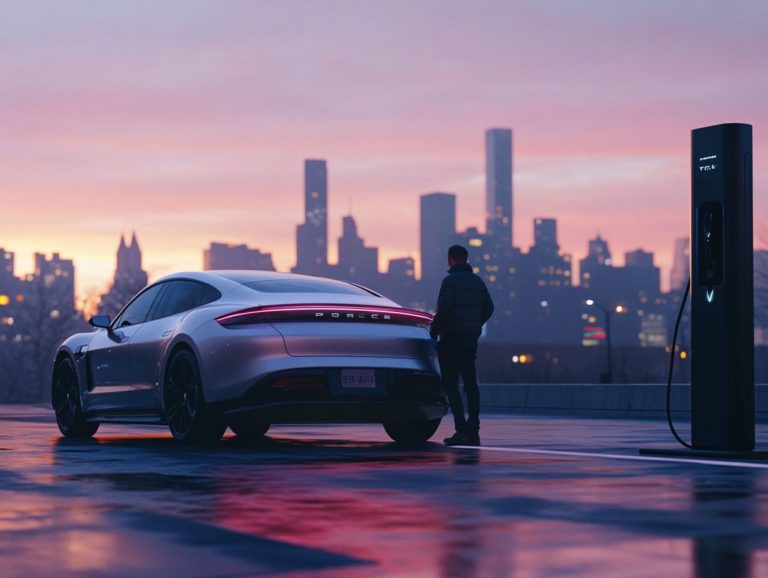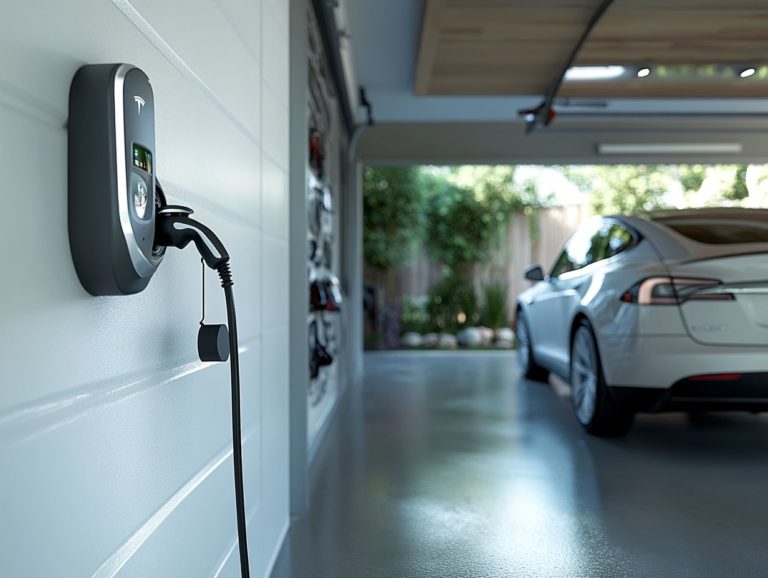The Future of EVs: Trends to Watch in 2024
Electric vehicles (EVs) are transforming the automotive world. They offer a sustainable alternative to traditional gasoline-powered cars.
As we move through 2024, understanding the current EV market is crucial. It’s important to recognize the technological advancements and their environmental impacts.
Join us as we explore the exciting surge in global EV sales, the groundbreaking developments in battery and charging technologies, and the challenges and opportunities that await.
Immerse yourself in this journey to uncover the trends that will shape the future of electric mobility.
Contents
- Key Takeaways:
- Current State of the EV Market
- Technological Advances in EVs
- Environmental Impact of EVs
- Challenges and Opportunities for EVs
- Predictions for the Future of EVs
- Frequently Asked Questions
- What is the significance of 2024 for EVs?
- What key trends will shape the EV industry in 2024?
- How will battery technology advancements shape the future of EVs?
- How will government policies boost EV growth in 2024?
- Will 2024 mark the rise of electric and autonomous vehicles?
- How will the future of EVs impact the automotive industry?
Key Takeaways:
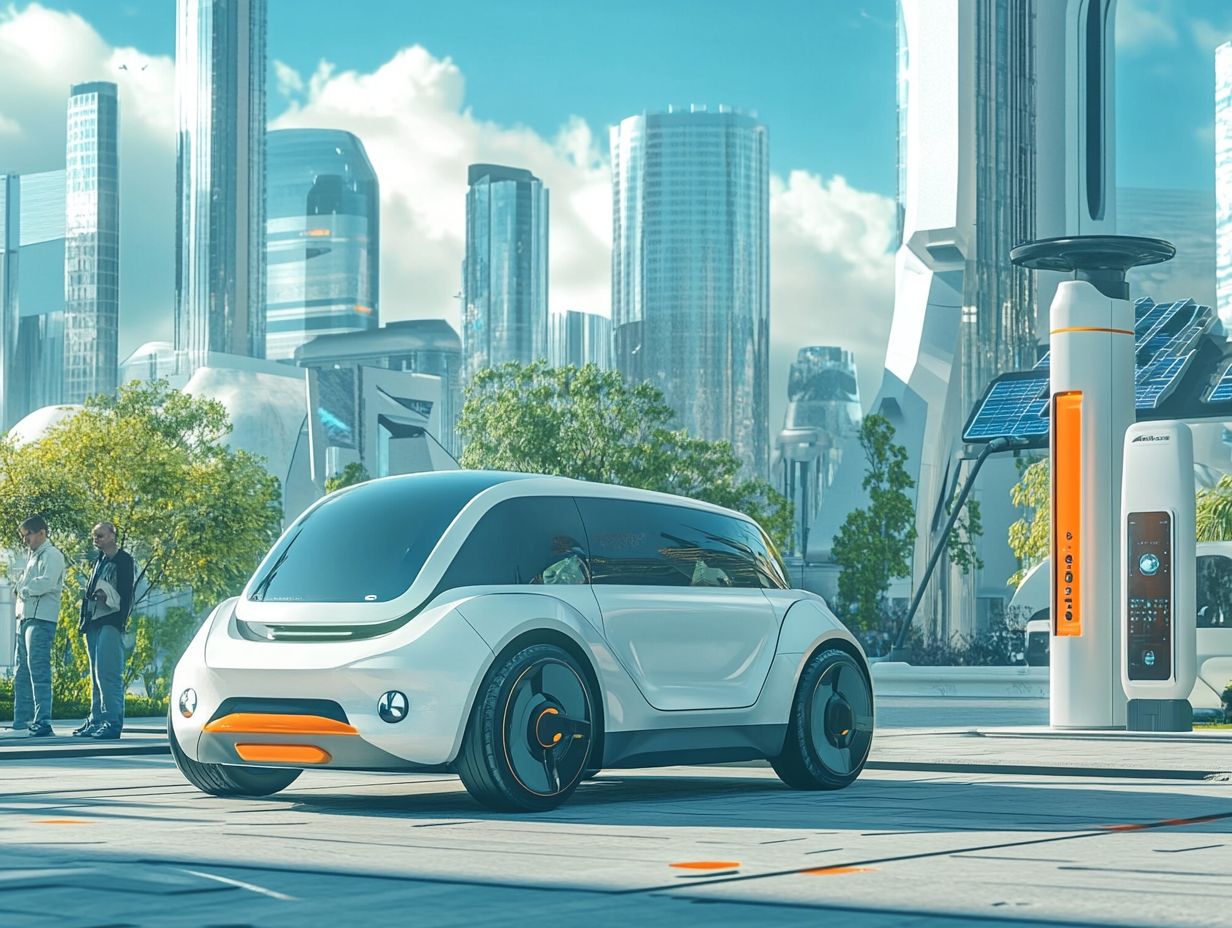
- EVs are gaining momentum as a sustainable transportation option, with global sales and adoption rates steadily increasing.
- Technological advancements in battery technology and charging infrastructure are key factors in the continued growth of the EV market.
- The future of EVs is promising, with potential for reduced carbon emissions and opportunities for innovation and growth in the industry.
What are EVs and Why are They Important?
Electric vehicles (EVs), including battery electric vehicles (BEVs), signify a remarkable shift in the automotive world. They move away from traditional internal combustion engines (ICEs) toward cleaner, more sustainable transportation options.
Their importance isn’t just about slashing greenhouse gas emissions; they promote electric mobility, backed by government policies like the Zero Emission Vehicle (ZEV) mandate.
With growing consumer awareness and robust support from car manufacturers, the adoption of EVs could play a pivotal role in reshaping the future of transportation on a global scale.
The significance of electric vehicles goes beyond personal environmental benefits; they actively contribute to enhancing urban air quality and reducing dependence on fossil fuels.
When compared to internal combustion engines, EVs frequently demonstrate lower operating costs and superior energy efficiency.
This transition to electrification is supported by various government incentives, such as tax credits and rebates, designed to hasten the movement toward greener technologies.
As the infrastructure for charging stations continues to expand, the convenience of using electric vehicles improves, making them an increasingly practical choice for both individual consumers and businesses alike.
Current State of the EV Market
The electric vehicle market today is a vibrant tapestry of change. It showcases a rapid embrace of EVs fueled by trends like retail price reductions and improved OEM incentives.
However, it also contends with consumer skepticism regarding performance and affordability.
As highlighted by JATO data, the movement toward electric mobility is unmistakable. Both established automakers and fresh players in the industry are racing to adapt to shifting consumer expectations and stringent regulatory standards.
Global EV Sales and Adoption Rates
Global EV sales have experienced a remarkable surge in recent years. Adoption rates are soaring in key regions like Europe, Germany, and the UK, as noted by the International Energy Agency.
This trend illustrates a growing acceptance of electric mobility, especially in emerging markets where the demand for sustainable transportation solutions is gaining momentum.
Regions such as North America and Asia-Pacific are also undergoing significant transformations. This shift is propelled by a mix of government incentives, enhanced charging infrastructure, and rising environmental consciousness among consumers.
Notably, countries like China are taking the lead in market penetration, bolstered by substantial investments in research and development, alongside stringent regulations aimed at curbing emissions.
The interplay of these elements emphasizes a commitment to transitioning toward greener technologies, revealing how local policies and consumer preferences shape the global landscape of electric vehicle adoption.
Technological Advances in EVs
Electric vehicles (EVs) are evolving fast, thanks to breakthroughs in battery technology and smart charging solutions. Innovations like solid-state batteries and charging stations are changing your driving experience.
These developments not only elevate efficiency and enhance your user experience but also tackle the critical challenges that come with electric mobility.
Improvements in Battery Technology
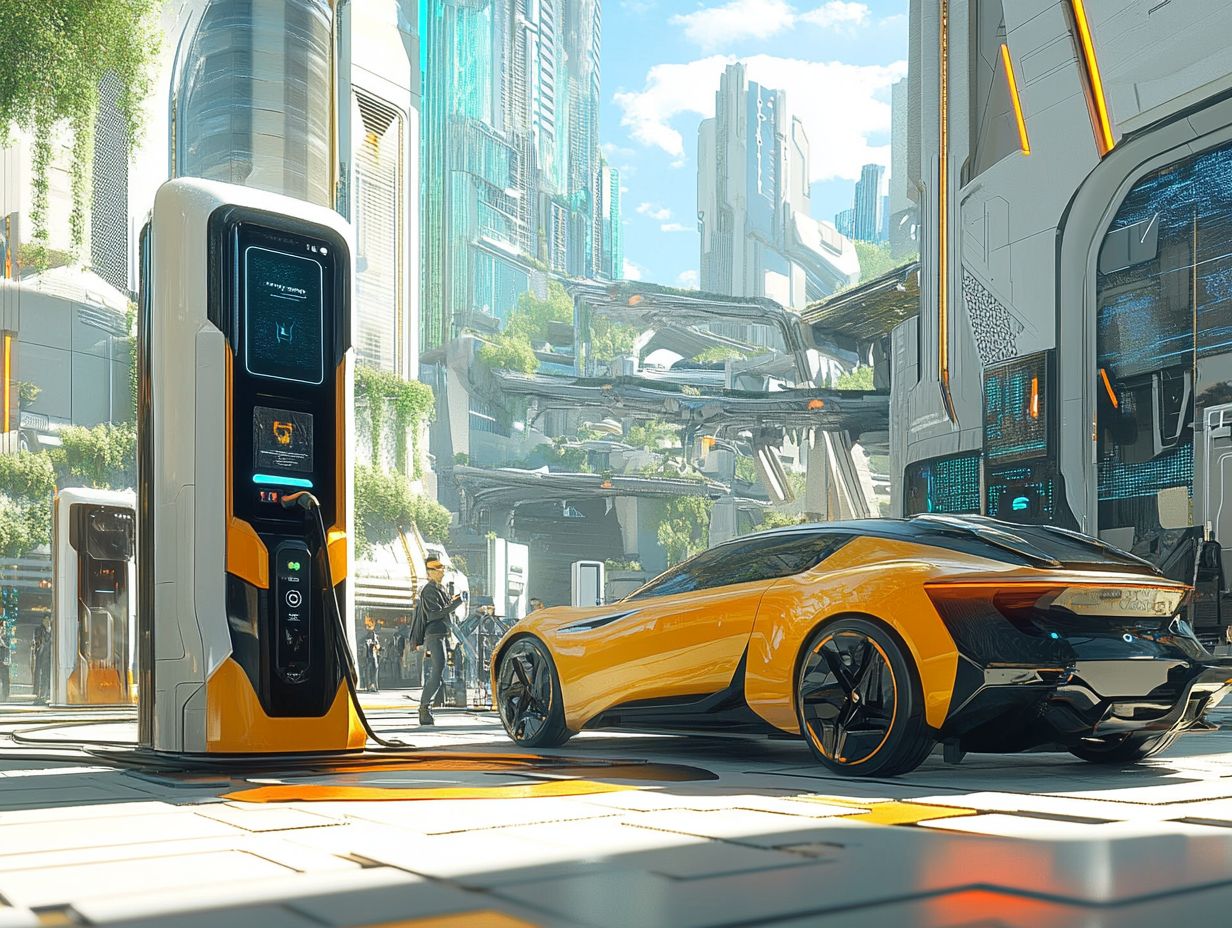
Battery technology is key to the future of EVs. New solid-state batteries increase safety and speed up charging.
These advancements promise to boost the energy storage capabilities of your vehicle while enhancing charging speed, effectively minimizing downtime. Solid-state batteries employ a solid electrolyte instead of the traditional liquid variant, offering greater safety and faster ion movement.
Strategies such as battery recycling and second-life applications are emerging as economical solutions, lowering overall production costs while reducing waste. As these technologies continue to mature, they will play a significant role in the mainstream adoption of electric vehicles, transforming them into a more viable choice for your daily driving needs.
Advancements in Charging Infrastructure
Charging infrastructure is improving, making it easier for you to charge your EV. Fast charging stations reduce wait times and eliminate range anxiety.
By embracing cutting-edge technology and broadening the network of charging points, providers ensure that you can easily locate charging stations while minimizing the time you spend at them. This transformation opens up new possibilities for your electric mobility journey, ultimately guiding more individuals toward sustainable transportation solutions.
Environmental Impact of EVs
Electric vehicles have a positive environmental impact. They greatly reduce carbon emissions compared to gas cars.
As you navigate the growing emphasis on sustainability, embracing electric vehicles becomes a crucial strategy in the fight against climate change and the promotion of cleaner air.
Reducing Carbon Emissions
Electric vehicles help cut carbon emissions. By using clean energy, they improve air quality and support global sustainability efforts.
Their emissions footprint is substantially lower than that of traditional internal combustion engines reliant on gasoline or diesel. This transition not only reduces harmful emissions but also aligns seamlessly with global clean energy initiatives designed to foster a sustainable future.
By embracing electric vehicles, you can significantly lessen the carbon footprint tied to transportation, paving the way for increased investment in renewable energy technologies. As more consumers prioritize sustainability, the influence of electric vehicles shapes energy policies and promotes a greener, healthier planet for generations to come.
Challenges and Opportunities for EVs
The EV industry is brimming with opportunities for growth and innovation. However, it also grapples with significant challenges, including doubt from buyers and hurdles to widespread adoption.
Understanding these dynamics is key for stakeholders eager to tap into the potential of electric mobility.
Barriers to Widespread Adoption
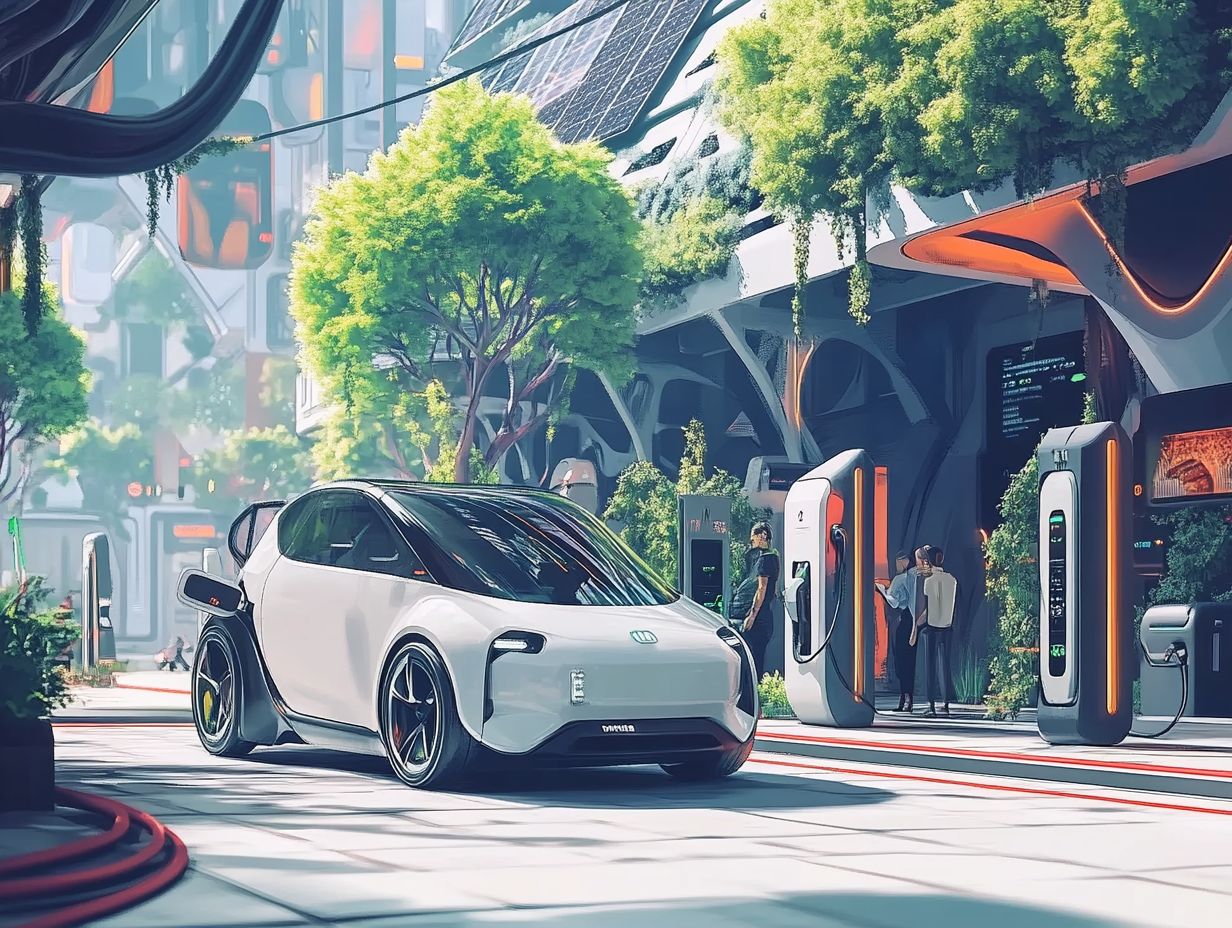
Barriers to the widespread adoption of electric vehicles often include the high costs of purchasing them and insufficient charging infrastructure. Additionally, lingering doubt from buyers about their practicality persists.
Addressing these challenges is crucial for fostering greater acceptance of electric mobility. Consider how financial incentives and subsidies can ease the burden of initial costs, making EVs more accessible.
Investing in charging infrastructure like fast-charging stations in urban and rural areas could significantly alleviate range anxiety and enhance consumer confidence.
Educating potential buyers about long-term savings on fuel and maintenance can reshape their perceptions.
By implementing comprehensive strategies that approach these issues from multiple angles, the transition to electric vehicles can be accelerated and made more appealing to those who remain hesitant.
Potential for Growth and Innovation
The electric vehicle sector holds exciting potential for growth and innovation, fueled by shifting market trends and increasing incentives from original equipment manufacturers (companies that make the vehicles) designed to promote electric mobility.
This dynamic environment cultivates the perfect conditions for new technologies and business models that can transform the industry.
As manufacturers strive to enhance the efficiency and affordability of electric vehicles, recognizing the critical role of advanced battery technologies, automation, and connectivity is essential.
Moreover, trends like shared mobility solutions and sustainable manufacturing practices are gaining momentum, setting the stage for a transformative future.
The incentives provided by OEMs not only encourage consumer adoption but also ignite healthy competition, driving continuous improvements in vehicle design and functionality.
With these powerful forces at work, the electric vehicle market is poised for significant evolution, promising an exciting journey ahead for those ready to embrace it.
Predictions for the Future of EVs
Expect a rapid rise in electric vehicle adoption due to technological advancements, shifting consumer behaviors, and supportive government policies designed to promote electric mobility.
As market trends evolve, the transportation landscape is poised for remarkable transformation.
Trends to Watch in 2024
- Continued emphasis on sustainability
- Groundbreaking advancements in battery technology
- Robust expansion of charging infrastructure
Looking ahead to 2024, these key trends will shape the electric vehicle landscape. Regulatory measures aimed at reducing carbon emissions are set to gain traction, compelling manufacturers to accelerate their production of the most anticipated electric vehicles.
Innovations in battery chemistry and recycling will enhance efficiency while driving down costs, making EVs more accessible for everyone. Meanwhile, the shift in consumer preferences toward eco-friendly options is likely to further elevate demand.
Combined with government incentives promoting clean energy transportation, these elements will create a thriving environment for the electric vehicle market in the coming year.
Frequently Asked Questions
What is the significance of 2024 for EVs?
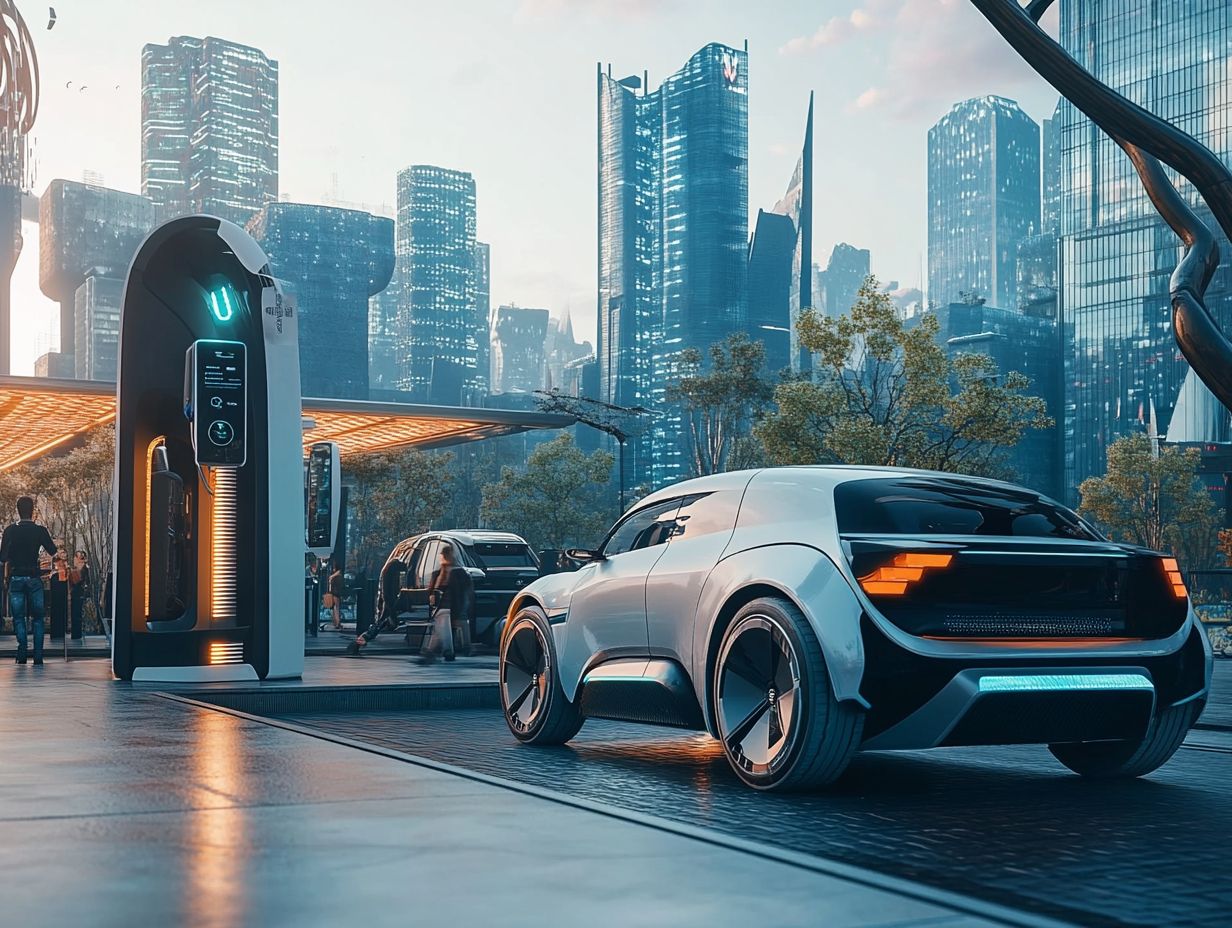
2024 is set to transform the electric vehicle industry. This year marks the end of major governments’ targets for reducing carbon emissions, greatly impacting EV demand and growth.
What key trends will shape the EV industry in 2024?
Expect a surge in affordable EV models and advancements in battery technology, along with insights from the rise of electric sports cars. More government incentives will also promote EV adoption.
How will battery technology advancements shape the future of EVs?
In 2024, significant improvements in battery technology will enhance energy density and charging speed, paving the way for the future of performance cars and helping to ease concerns about how far EVs can travel on a single charge.
How will government policies boost EV growth in 2024?
Stricter emissions standards and incentives will encourage more consumers to switch to electric vehicles. This will lead to increased demand and production in the EV market.
Will 2024 mark the rise of electric and autonomous vehicles?
Expect a leap in electric and self-driving vehicle production. With enhanced safety features, what to expect from new car features in 2024 could be pivotal for these technologies.
How will the future of EVs impact the automotive industry?
The future of EVs promises to reshape the automotive landscape. As more countries commit to carbon reduction, demand for electric vehicles will soar, leading to significant changes in manufacturing and business strategies. For insights on upcoming trends, check out what to expect from the 2024 SUV market.





